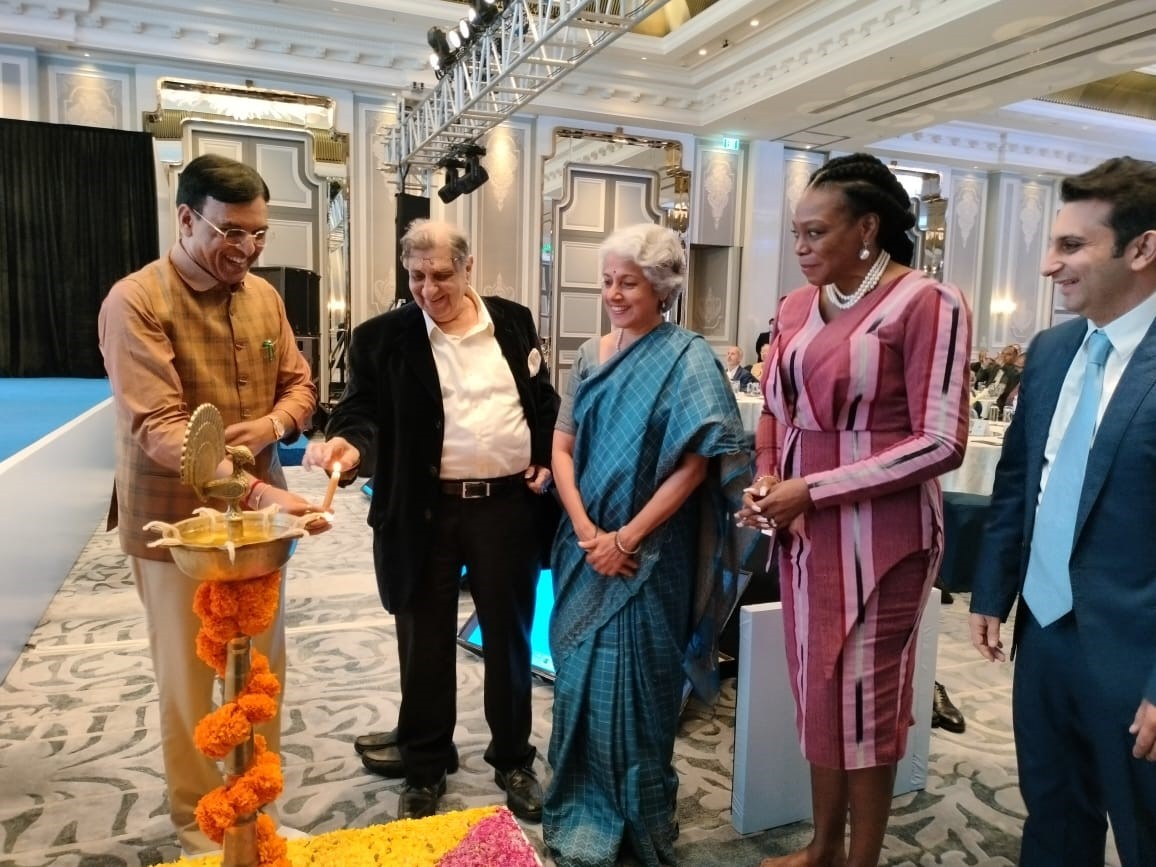Vinod Kumar
10 OCT 2022 4, New Delhi. Establishing a new milestone in the field of mental health on the occasion of World Mental Health Day, Tele Mental Health Assistance and Networking Across States (Tele-MANAS) initiative of Union Ministry of Health & Family Welfare was launched today virtually by Sh. Thawar Chand Gehlot, Hon’ble Governor of Karnataka at National Institute of Mental Health and Neurosciences (NIMHANS), Bengaluru, in the presence of Dr. K. Sudhakar, Minister for Health & Family Welfare and Medical Education, Karnataka & Vice-President, NIMHANS.

- Tele Mental Health Assistance and Networking Across States (Tele-MANAS) initiative launched on occasion of World Mental Health Day
- 24X7 tele-mental Health Services available on Toll Free Number- 14416
- Network of 23 tele-mental Health Centres of Excellence created; NIMHANS, Bengaluru and IIITB to be nodal mentoring Institutes
- Reiterating Government’s vision for providing access for all to mental healthcare services, at least One Tele-MANAS Cell to be established in each State/UT
Acknowledging the mental health crisis in wake of the COVID-19 pandemic and an urgent need to establish a digital mental health network that will withstand the challenges amplified by the pandemic, Government of India announced National Tele Mental Health Programme (NTMHP) in the Union Budget 2022-23.
Tele-MANAS aims to provide free tele-mental health services all over the country round the clock, particularly catering to people in remote or under-served areas. The programme includes a network of 23 tele-mental health centres of excellence, with NIMHANS being the nodal centre and International Institute of Information Technology-Bangalore (IIITB) providing technology support. Indian Institute of Technology (IIT) Bengaluru and National Health Systems Resource Centre (NHRSC) will provide the technical support.
The Union Government aims to open at least one Tele-MANAS Cell in each State/UT.
A toll-free, 24/7 helpline number (14416) has been set up across the country allowing callers to select the language of choice for availing services. Service is also accessible with 1-800-91-4416. The calls would be routed to Tele-MANAS cells in the respective state and union territory.
Tele-MANAS will be organised in two tier system; Tier 1 comprises of state Tele-MANAS cells which include trained counsellors and mental health specialists. Tier 2 will comprise of specialists at District Mental Health Programme (DMHP)/Medical College resources for physical consultation and/or e-Sanjeevani for audio visual consultation. Presently there are 5 regional coordination centres along with 51 State/UT Tele MANAS cells.
The initial rollout providing basic support and counselling through centralized Interactive Voice Response system (IVRS) is being customized for use across all States and UTs. This will not only help in providing immediate mental healthcare services, but also facilitate continuum of care. Specialised care is being envisioned through the programme by linking Tele-MANAS with other services like National tele-consultation service, e-Sanjeevani, Ayushman Bharat Digital Mission, mental health professionals, Ayushman Bharat health and wellness centres and emergency psychiatric facilities. Eventually, this will include the entire spectrum of mental wellness and illness, and integrate all systems that provide mental health care. NIMHANS has conducted training for 900 Tele MANAS counsellors from majority of States/UTs.
The mentoring institutes are as follows: AIIMS, Patna, AIIMS Raipur, CIP Ranchi, AIIMS Bhopal, AIIMS Kalyani, AIIMS Bhubaneshwar, PGIMER, Chandigarh, Hospital for Mental Health, Ahmedabad, Gujarat, Inst. of Psychiatry and Human Behaviour Bambolim Goa, AIIMS, Nagpur, AIIMS, Jodhpur, KGMU Lucknow, AIIMS Rishikesh, IHBAS, Delhi, IGMS, Shimla, Psychiatric Diseases Hospital, Govt. Medical College, Srinagar, LGBRIMH, Tezpur, NIMHANS, Bengaluru, IMHANS, Kozhikode, Kerala, IMH, Chennai, IMH, Hyderabad, JIPMER and AIIMS, Mangalagiri.
States/UTs launching Tele Mental Health Programme today include Andhra Pradesh, Assam, Andaman and Nicobar Islands, Chhattisgarh, Dadra Nagar Haveli and daman and Diu, Gujarat, Himachal Pradesh, Jammu and Kashmir, Karnataka, Kerala, Ladakh, Maharashtra, Madhya Pradesh, Odisha, Punjab, Rajasthan, Tamil Nadu, Telangana, Uttar Pradesh and West Bengal.
Dr. Pratima Murthy, Director, NIMHANS, Shri Vishal Chauhan, JS (MoHFW), students, faculties and other dignitaries along with the senior officials of the Ministry were present at the event.








